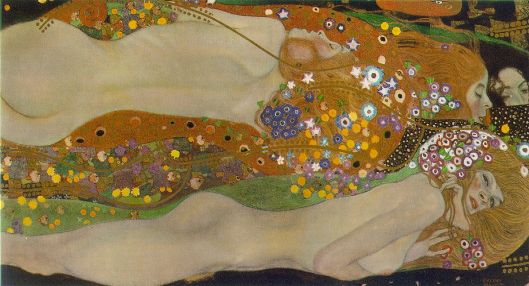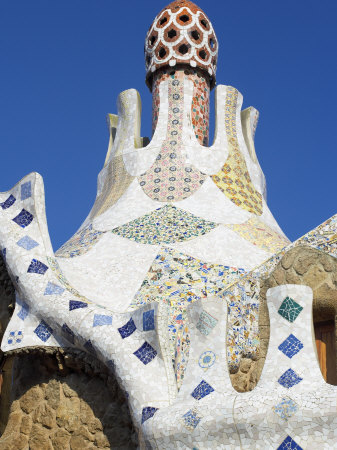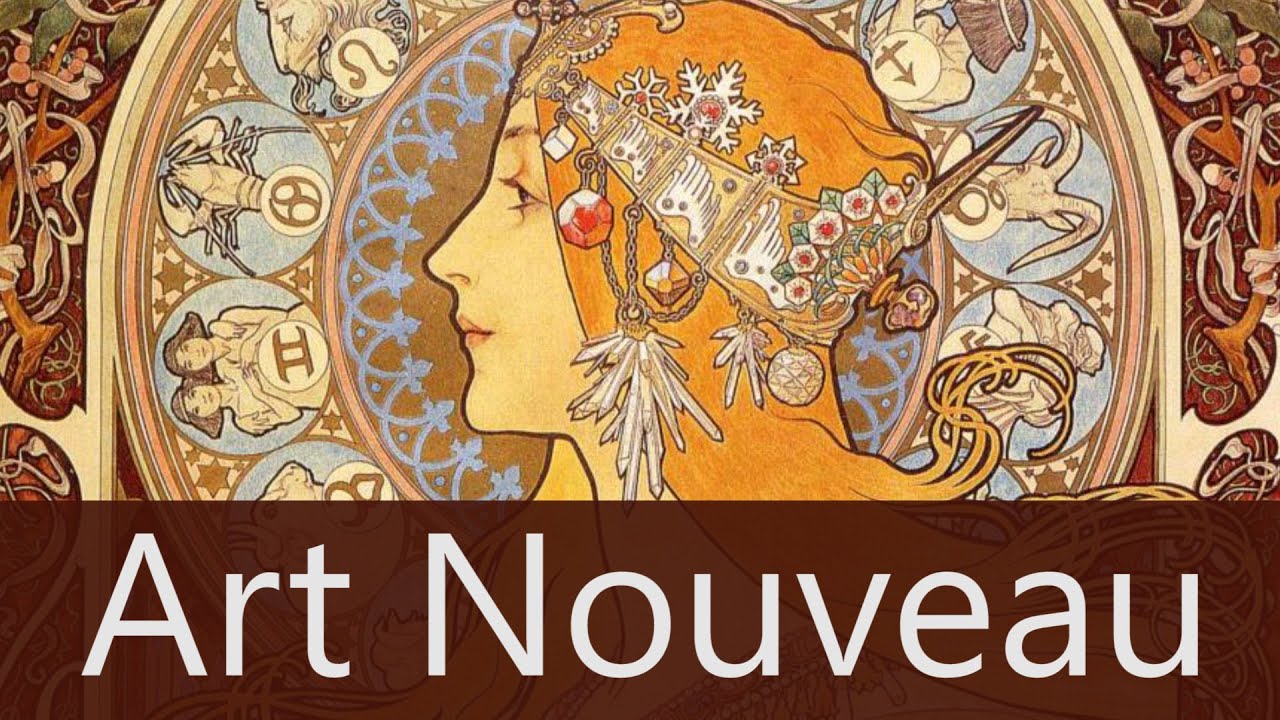Art Nouveau History
The Art Nouveau movement was a decorative style of art that evolved from the end of the 1880s and lasted up to the beginning of the First World War. Art Nouveau was so called because it was named after a prominent shop in Paris called La Maison de l’Art Nouveau, which featured and promoted many of the latest ideas in art. It began as a reaction against the historical emphasis that most art of the mid nineteenth century had.
The Art Nouveau movement was known as Jugendstil in Germany, Sezessionstil in Austria, and Modernismo in Spain. Art Nouveau history has its roots in the Arts and Crafts movement in the UK, and the work of William Morris in particular, as well as representing a development from the earlier movements of romanticism and symbolism.

Art Nouveau History – ‘Acqua Mossa’ by Gustav Klimt
The style of the Art Nouveau movement was one based on elaborate ornamental motifs and natural forms, often involving leaves, flowers, vines and long female hair. The style often featured exotic details and showed influences from many decorative art sources from different parts of the world. It was often erotic and the concentration on decorative pattern became an important step towards the future development of abstract art.
Painting was not the main medium for the Art Nouveau style, as it was best embodied in decorative arts such as jewellery, glass and interior design. Painting did feature in the Art Nouveau Movement, but more prominent than painting was the graphic arts including illustration and poster design. The most well known painter in the Art Nouveau movement was Gustav Klimt.
Art Nouveau history shows us that artists created an international style that was very much of the modern age. Elements from this rapidly changing and developing period were combined with ideas of spirituality, fantasy and mythology to form a new style. The approach included the use of modern materials and techniques, as well as valuing traditional craftsmanship.
Leading artists in Art Nouveau history include the painter Gustav Klimt, the illustrators Aubrey Beardsley and Walter Crane, jewellery designer Rene Lalique, architects Antonio Gaudi, Louis Sullivan, Henry Van de Velde and Victor Horta and glassware designer Louis Tiffany.

